Hardware Features
The Lynx VTOL airframe consists of the following components.
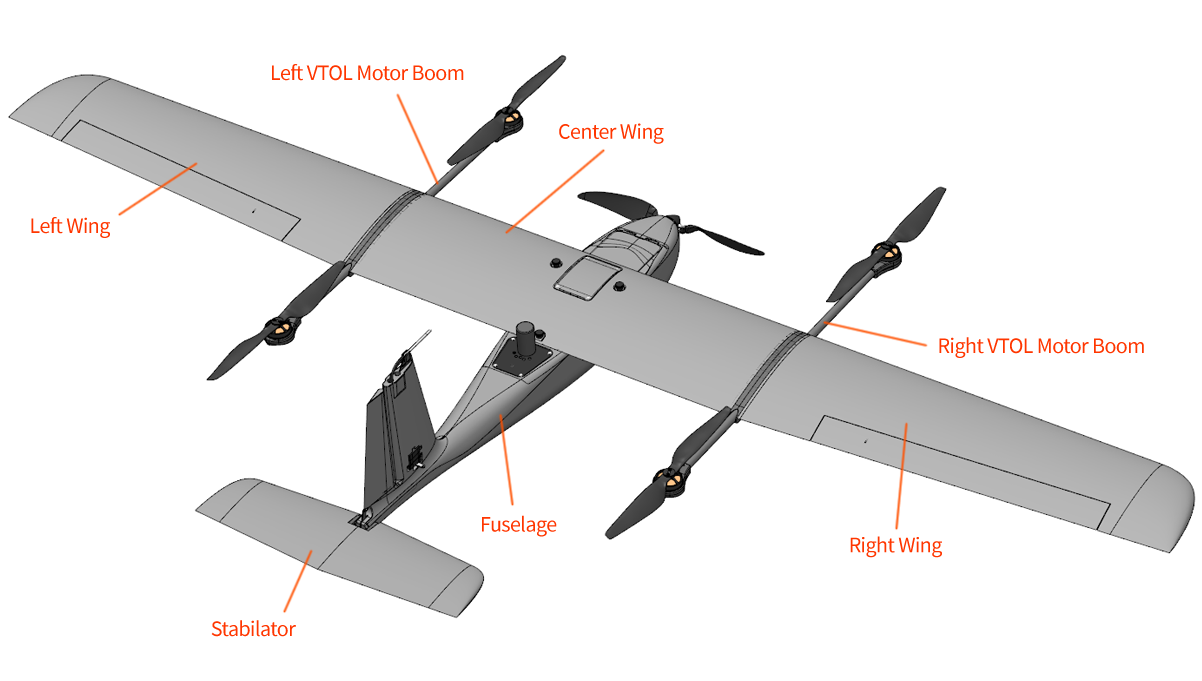
Fuselage: The Lynx VTOL fuselage is the main body of the airframe and contains the majority of electronics, including the autopilot and payload.
Left/Right Wing: The wings provide lift for the aircraft when in forward flight. Each contains a servo actuator and aileron for controlling the how the aircraft turns in flight. The wings are detachable from the center wing.
Center Wing: The center wing connects to the top side of the fuselage and joins the entire wing and VTOL motor booms together. It also houses electronics for controlling the VTOL motors.
Left/Right VTOL Motor Boom: The vertical takeoff and landing (VTOL) booms connect to the center wing and contain two vertical thrust motors each.
Stabilator: The stabilator is a movable tail surface for controlling climbs, descents, and aircraft pitch in flight.
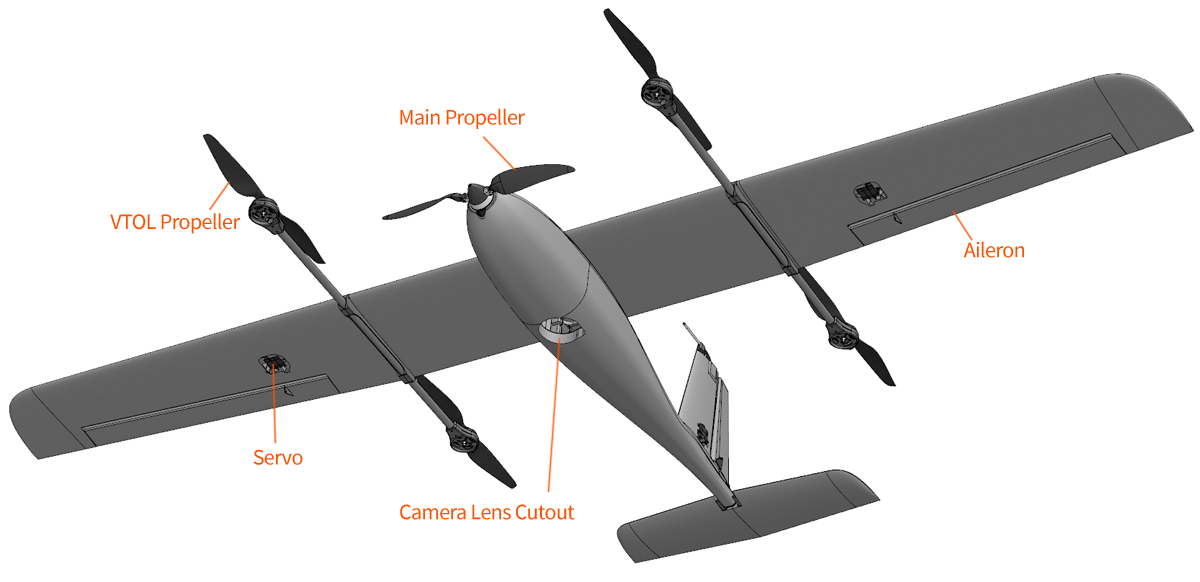
Main Propeller: Used to generate thrust when flying as an airplane.
Warning: Rotating propeller(s) may cause serious injury or death. When attached to the motor the propeller spins at high speeds and is capable of cutting. Always keep clear of propellers when the aircraft is armed, taking-off, or landing, and whenever possible while the aircraft is powered-on.
VTOL Propeller: Used to generate thrust for vertical takeoffs and landings.
Camera Lens Cutout: Lynx VTOL features downward facing camera payloads for aerial mapping.
Aileron: An aileron is a hinged flight control surface that turns the aircraft in flight.
Servo: A servo is an electric device that moves a flight control surface. Lynx VTOL has four servos. The servos located in each wing move the ailerons.
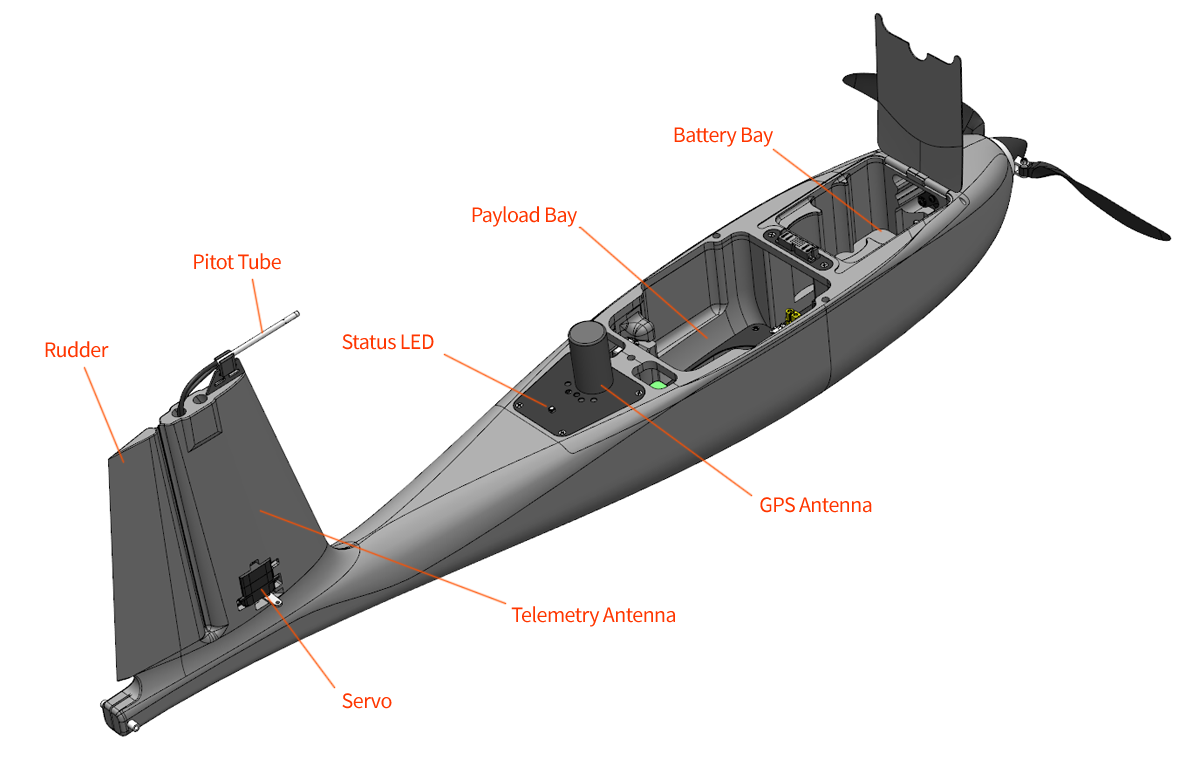
Battery Bay: Lynx VTOL is an electric aircraft. The main and VTOL batteries are installed within the battery bay.
Caution: Proper care of your battery is essential. Please read the battery charging instructions.
Payload Bay: Swappable cameras are housed within the payload bay.
GPS Antenna: Lynx VTOL features a multi-constellation, multi-band (L1/L2) GPS antenna used for determining aircraft position, altitude, and geo-tagging images.
Status LED: This colored LED indicates the status of the autopilot.
Telemetry Antenna: Used by the aircraft to communicate with Swift GCS via the ground telemetry radio. The antenna is located within the rudder.
Pitot Tube: The pitot tube combined with the airspeed sensor provide Lynx VTOL with airspeed and wind information. It must be kept clean and clear of obstructions to function properly.
Servo: The fuselage contains two servos. One controls the rudder, the other controls the stabilator.
Rudder: The rudder is a hinged flight control surface used to coordinate turns.

Standard Mapping Payload: RGB mapping payload with high resolution and large Sony sensor.
Multispectral Mapping Payload: 5-band multispectral payload with downwelling light sensor.
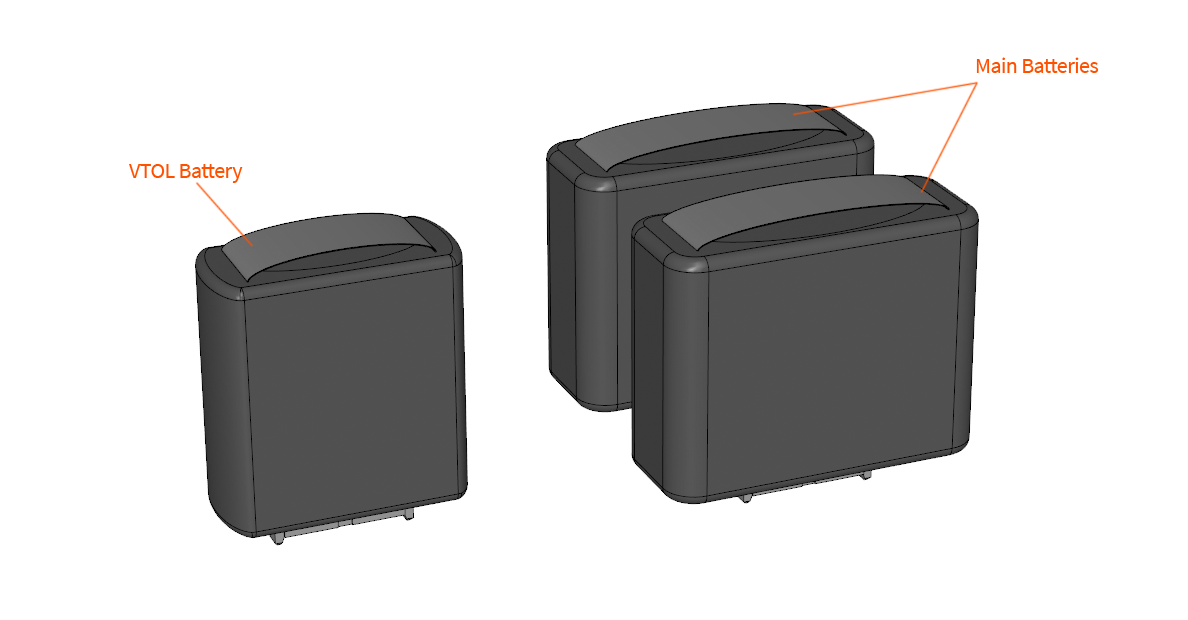
Main Batteries: Lynx VTOL uses one pair of main batteries. That main battery is split into two packs to comply with air cargo and airline restrictions. The two main batteries are connected in series and power the avionics and fixed-wing equipment.
VTOL Battery: Lynx VTOL uses a single high-discharge battery dedicated to the VTOL motors and is only used during takeoff and landing.
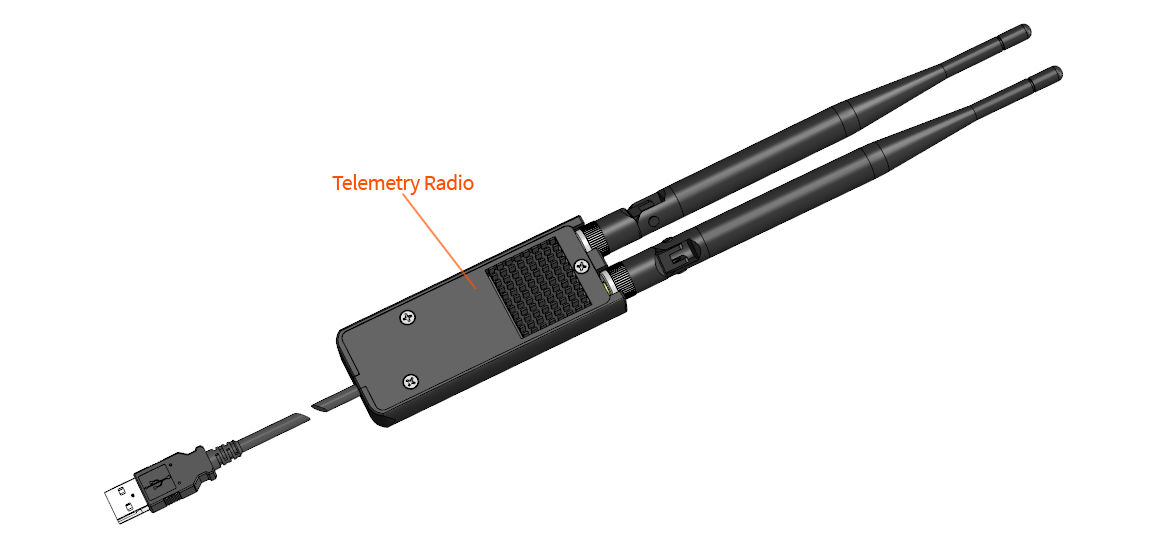
Telemetry Radio: The telemetry radio communicates with the aircraft on the ground and in flight.

RC Controller: The RC controller enables the safety pilot to optionally fly the aircraft in assisted modes.